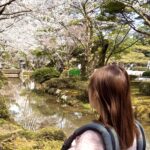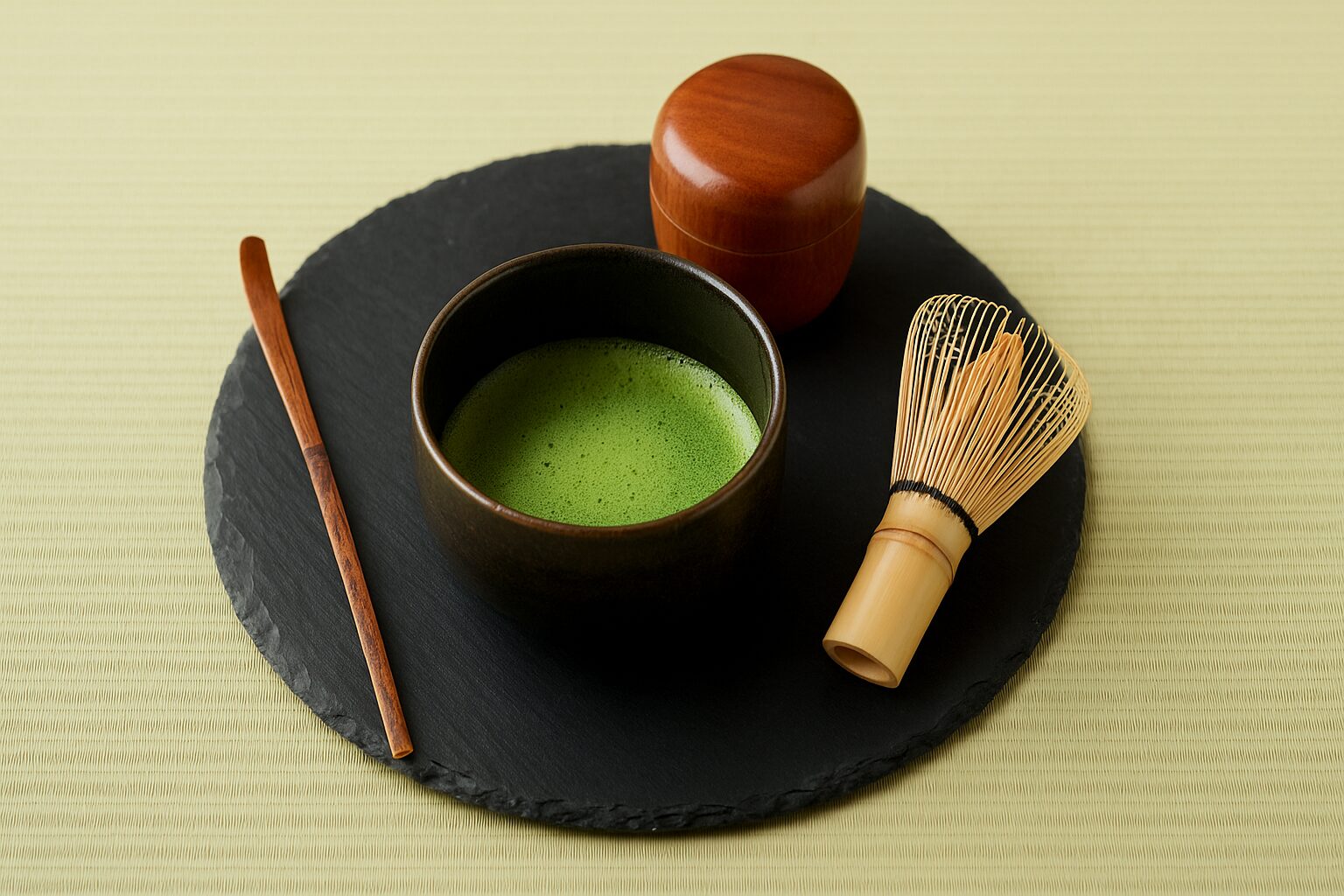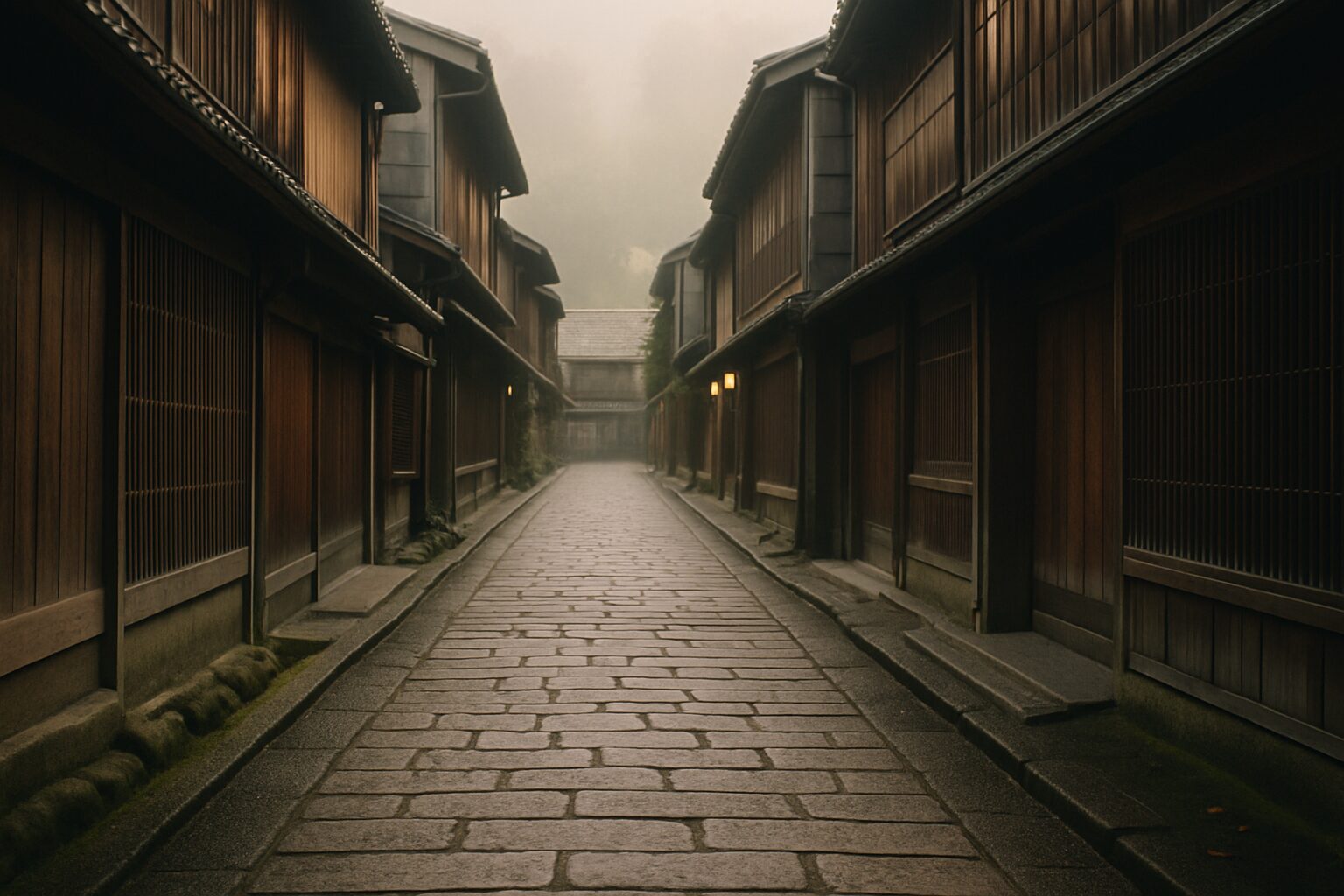Why Experience the Tea Ceremony in Kanazawa? Discover a Unique Sense of “Wabi-Sabi” Beyond Kyoto
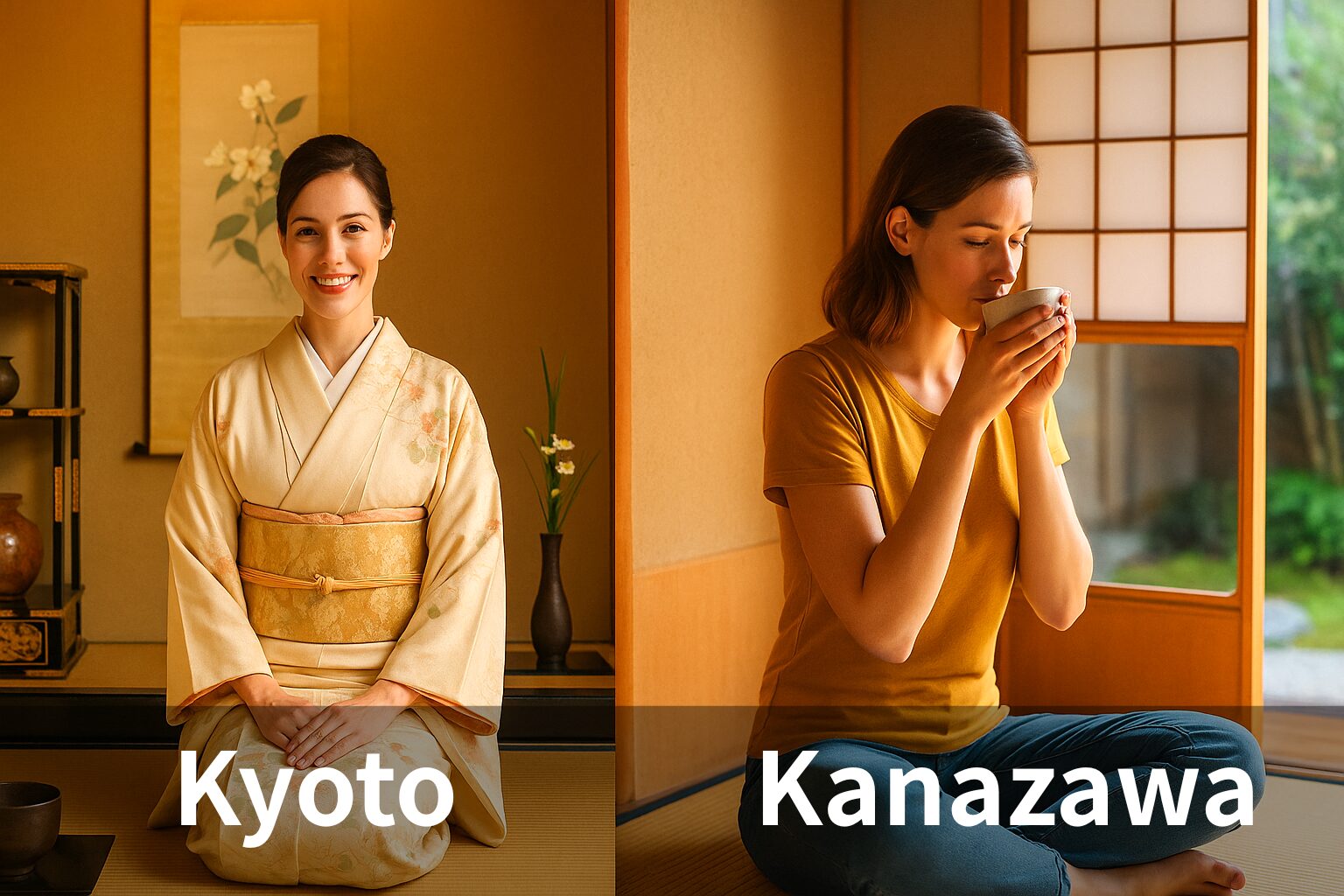
If you’re planning a trip to Japan, chances are you’ve thought about experiencing a traditional tea ceremony. But when your itinerary includes Kanazawa, you might wonder—isn’t Kyoto the place for the real deal?
Surprisingly, Kanazawa offers its own deeply rooted tea culture, distinct from Kyoto’s and rich in quiet refinement. If you’re seeking a tranquil, authentic encounter with wabi-sabi—the Japanese aesthetic of simplicity and transience—Kanazawa might just be the perfect setting. In this article, we’ll explore how the tea experience in Kanazawa differs from Kyoto’s and why this lesser-known destination may be exactly what your journey needs.
- Tea Ceremony in Kyoto vs. Kanazawa: A Cultural Backdrop
- The Air of “Wabi” in Kanazawa’s Tea Rooms: Tranquility and Harmony
- Memory Imprinted in Every Cup and Sweet: Kanazawa’s Cultural Layers
- Tea Ceremony as a Travel Experience: Kyoto vs. Kanazawa
- Why Now Is the Perfect Time to Experience Tea Ceremony in Kanazawa
Tea Ceremony in Kyoto vs. Kanazawa: A Cultural Backdrop
Courtly Elegance vs. Samurai Simplicity
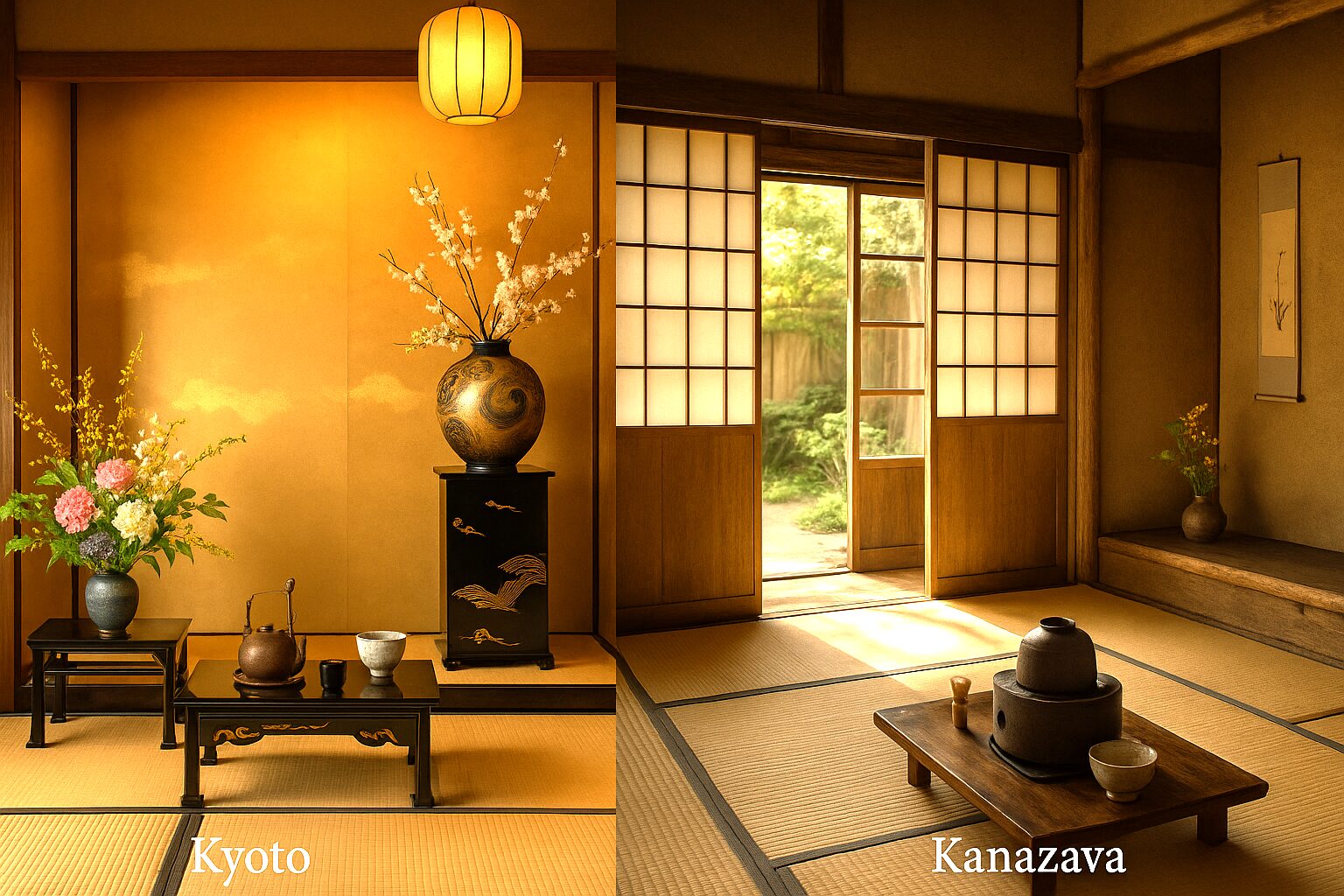
Kyoto’s tea tradition flourished under the influence of imperial and aristocratic culture. The emphasis here is on grace, formality, and ornate beauty—everything from the meticulous etiquette to the decorative tea rooms reflects a world of refined elegance.
In contrast, Kanazawa was shaped by samurai culture as the capital of the Kaga Domain. Here, the tea ceremony developed within a lifestyle of restraint and introspection. Instead of focusing on visual splendor, Kanazawa’s tea practice embodies a quiet appreciation for balance, modesty, and inner calm. It’s less about show, and more about spirit.
| Comparison Axis | Kyoto | Kanazawa |
|---|---|---|
| Cultural Origin | Influenced by imperial and aristocratic traditions | Rooted in the daily life of samurai culture |
| Core Values | Formality, grace, elegance | Simplicity, modesty, spiritual depth |
| Style of Tea Practice | Ceremonial, structured, performance-like | Quiet, unpretentious, integrated with daily rhythm |
Visual Splendor vs. Introspective Beauty
Tea rooms in Kyoto often highlight visual elements—sophisticated gardens, intricate architecture, elegant alcoves. There’s much to see and admire.
Kanazawa’s tea rooms, however, invite you to notice what isn’t there. They offer a sensory experience of stillness and space, encouraging a moment of quiet reflection. The focus shifts from what you see to what you feel—air, silence, presence.
| Comparison Axis | Kyoto | Kanazawa |
|---|---|---|
| Design Focus | Decorative, visually elaborate | Minimal, designed to evoke stillness |
| Sensory Emphasis | Sight – gardens, architecture, alcoves | Presence – air, silence, filtered light |
| Emotional Impact | Inspires awe and admiration | Encourages quiet reflection and inner calm |
The Air of “Wabi” in Kanazawa’s Tea Rooms: Tranquility and Harmony
The Comforting Calm of Shokoan at Kyuen-tei

Tucked away near Kanazawa Castle and Omicho Market, the Shokoan tea house at Kyuen-tei is surrounded by a wooden fence and blends so subtly into its neighborhood that you might miss it if you weren’t looking. Step through its lattice gate, though, and you’re met with a meticulously kept garden and a serene Japanese-style room. The bustle of the outside world fades away.
This space feels like returning to a grandmother’s home—a place of warmth and familiarity. It doesn’t feel like a formal tea room but rather a natural extension of daily life, offering visitors a gentle, grounding experience.
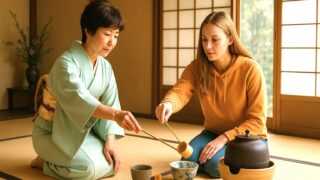
A Design Built for Silence
Every element of Shokoan seems intentionally arranged to encourage stillness. From the placement of the garden, the soft light filtering through shoji screens, to the acoustics of the tatami room—everything is crafted to enhance the sensation of quiet. You don’t just observe tranquility—you breathe it in. It’s a space that invites deeper, slower presence.
Memory Imprinted in Every Cup and Sweet: Kanazawa’s Cultural Layers
What makes the tea ceremony in Kanazawa so rich isn’t just the tea room itself. Every detail—from the teacups to the seasonal sweets—reflects the local culture. These elements aren’t merely accessories; they are woven into the experience, elevating the entire ritual into something deeply layered and memorable.
The Aesthetic Soul of Kutani Ware
One of the highlights is the use of Kutani-yaki, a traditional Kanazawa ceramic known for its vivid colors and intricate designs. Originating in the 17th century under the patronage of the Kaga clan, Kutani ware is more than functional—it’s artistic.
vividly colored porcelain from Kanazawa, first developed in the 1600s.
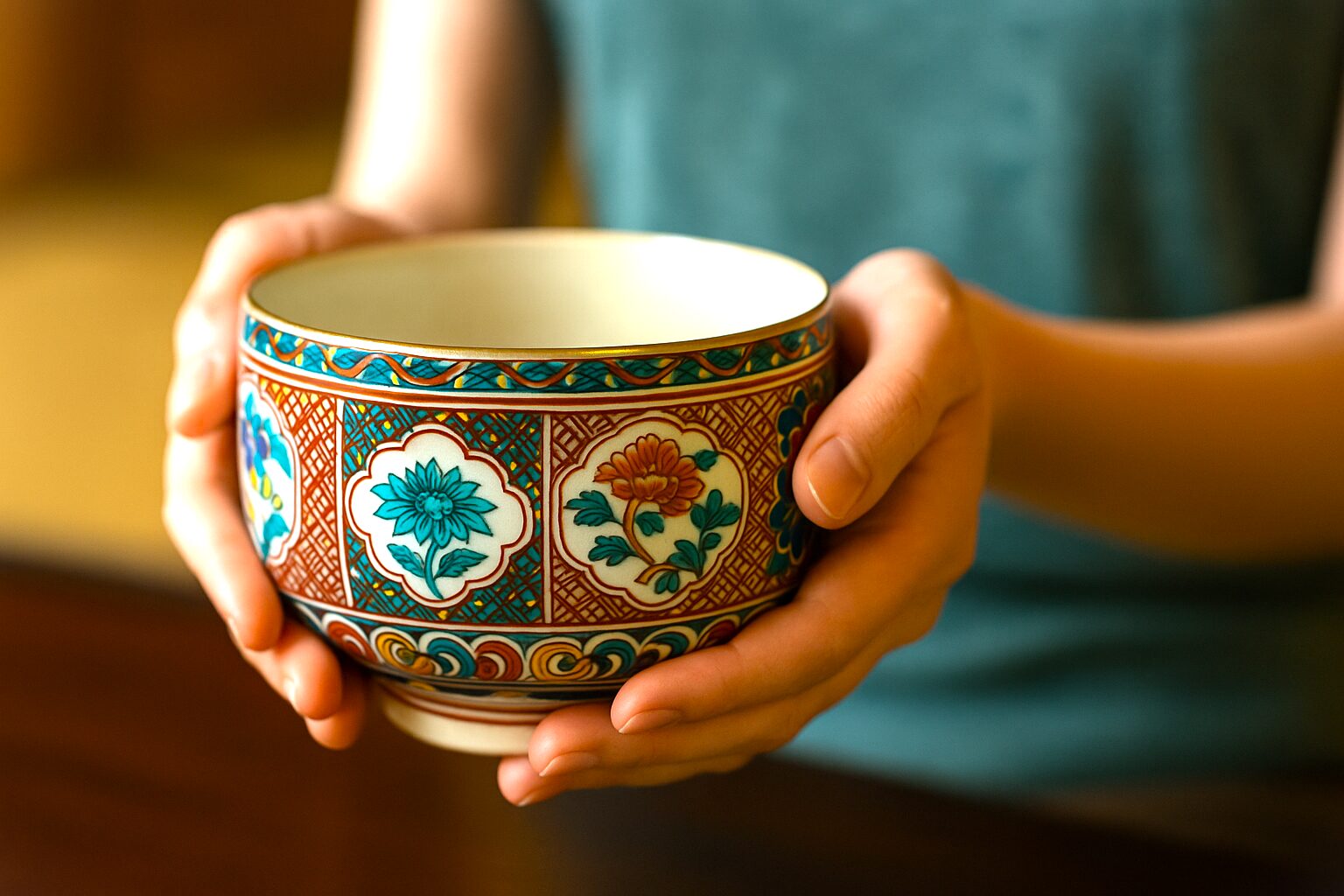
Holding a piece of Kutani ware in a tea setting, you can feel its weight, its warmth, and somehow, its history. The vivid patterns—whether floral, geometric, or scenic—tell quiet stories, connecting you to the land and its artisans.
Seasonal Emotions in a Bite: Wagashi as Edible Art
Kanazawa is known throughout Japan as the city that consumes the most traditional sweets—wagashi. At a tea ceremony, these confections take center stage. Crafted to reflect seasonal motifs like cherry blossoms or autumn leaves, each sweet is a small, edible artwork.
traditional Japanese sweets, often seasonally themed.
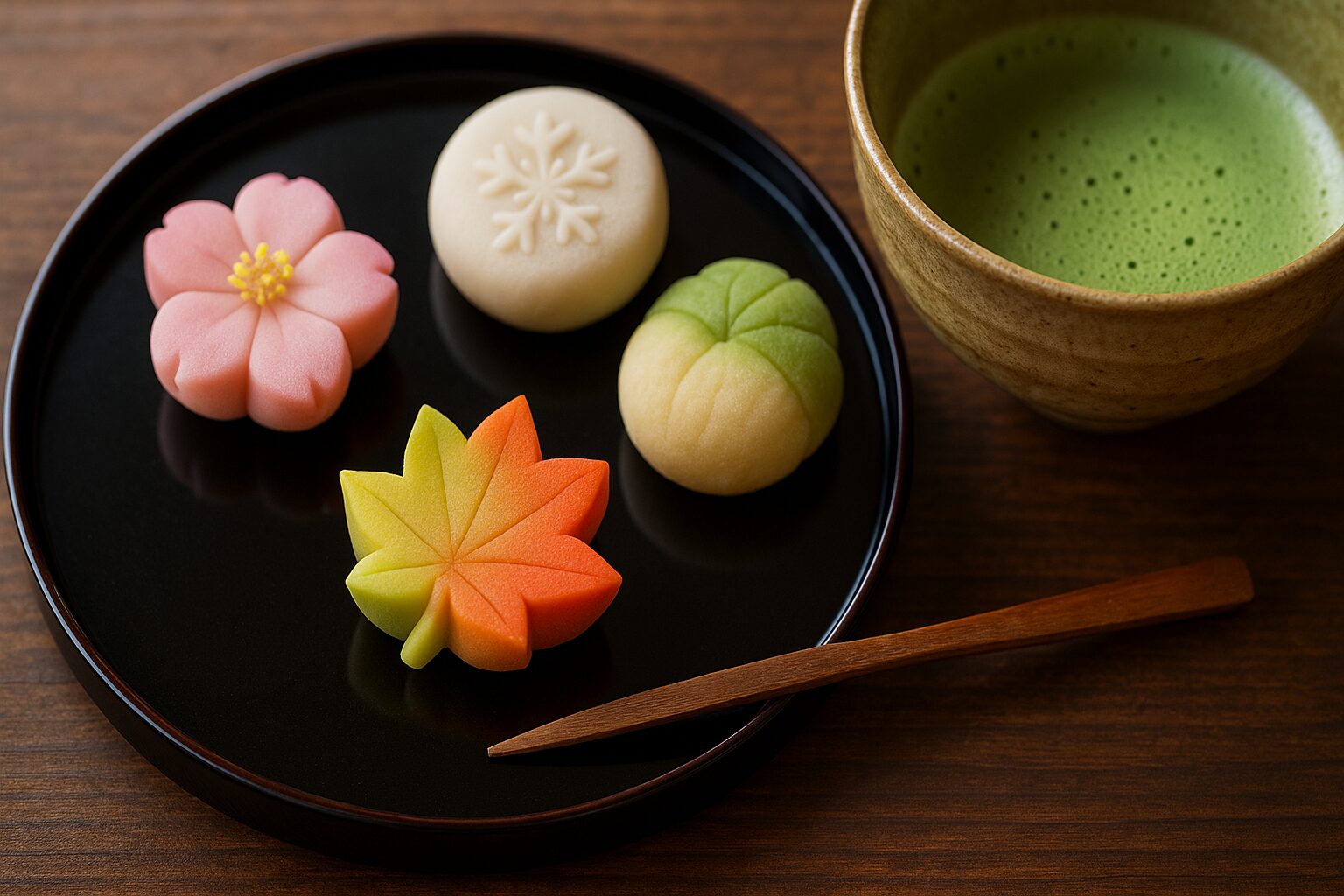
Their colors and shapes are not only beautiful but emotionally expressive—graceful, modest, and quietly profound. Every shop has its own take, so discovering your favorite wagashi becomes part of the cultural adventure.
Tea Ceremony as a Travel Experience: Kyoto vs. Kanazawa
Comparing the Two Experiences

Here’s a quick comparison to help you decide which experience fits your travel style.
| Category | Kyoto | Kanazawa |
|---|---|---|
| Cultural Background | Rooted in courtly tradition and religious formality → Ritualistic, structured, elegant | Developed from samurai life → Grounded in everyday quiet and inner stillness |
| Tea Room Atmosphere | Ornate, artistic, and visually captivating | Simple, calming, and in harmony with nature |
| Accessibility | Strong ties to traditional schools; can be crowded and hard to book | Casual, welcoming, and beginner-friendly |
| Integration with Town | Often seen as a specialized cultural pursuit | Deeply woven into local life—art, sweets, tea as one cultural tapestry |
Which Experience is Right for You?
If you’re seeking an elegant and lively experience alongside other sightseeing, Kyoto may be your match.
But if you long for a more reflective, peaceful moment during your journey—something truly rooted in Japanese daily aesthetics—Kanazawa offers something quietly profound.
Why Now Is the Perfect Time to Experience Tea Ceremony in Kanazawa
The tea ceremony isn’t just a cultural attraction—it’s a moment to restore your spirit.
Kanazawa provides the ideal setting for this. Tea rooms, wagashi, handcrafted ceramics, the gentle pace of the city—all align to invite you inward. The experience is not flashy but heartfelt, offering a gentle companionship rather than spectacle.

Why not take a break from your busy travels?
Why not allow a moment of calm into your journey? A tea ceremony in Kanazawa might be just what your trip—and your heart—needs.
▶️ Curious about what it’s like to try a tea ceremony in Kanazawa? Check out our hands-on experience article here.

